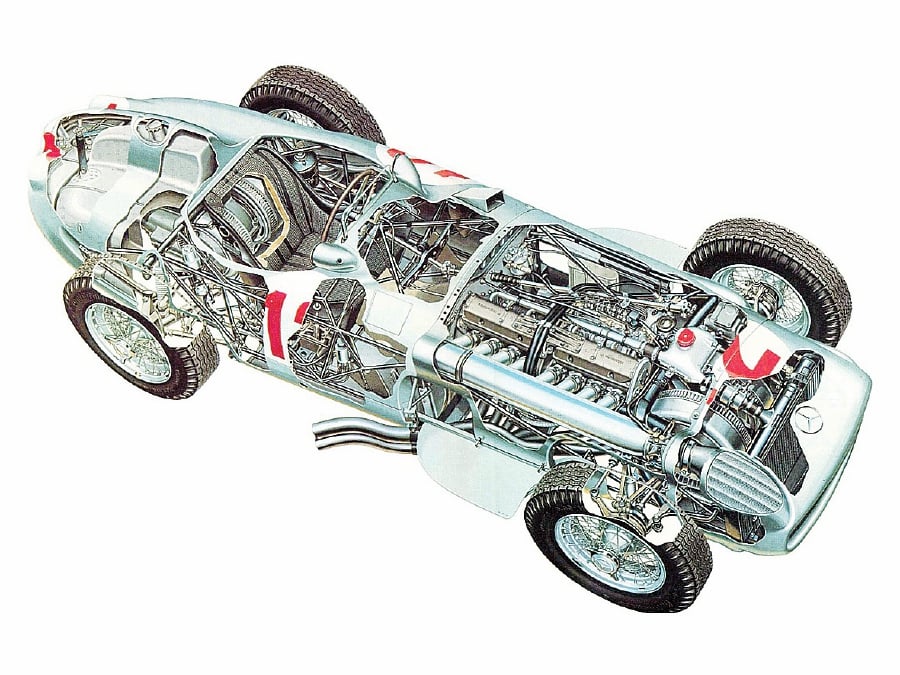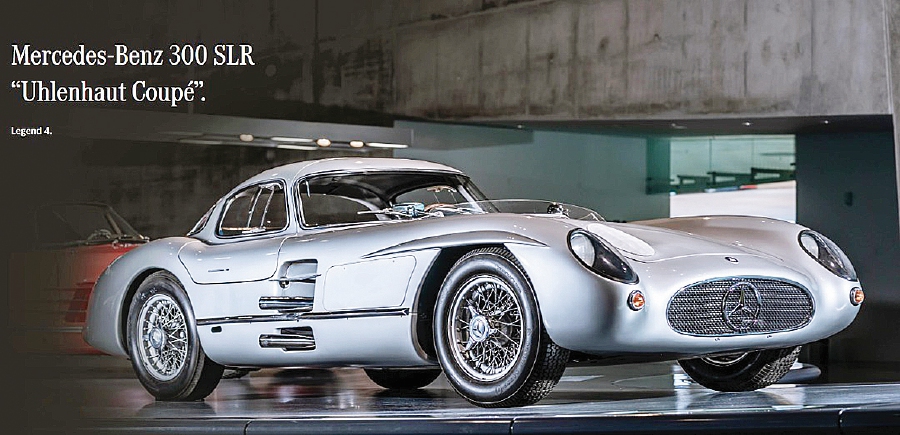CLASSIC cars are now accepted as works of art and some have even attained investment grade status.
It means that your banker wouldn't be upset even if you were to take out your kids' inheritance to buy a Maserati Birdcage, a Ferrari 250GTO or even Bugatti's Type 35 or Royale.
Before the 1955 Mercedes Benz 300 SLR Uhlenhaut Coupe was sold for US$143 million recently, the previous record holder was a Ferrari 250GTO, which went for US$40 million and change.
So what is it about this classic Mercedes that makes it worth more than a 300-foot yacht? Other than the fact that the car has a mythical quality because none ever made it onto the open market, here are five other unique bits about the car that may make it really interesting.
1. SUPER RARITY
Only nine W196S chassis were ever built and out of those, only two were draped in coupe bodywork. The coupe experiment was possibly an exploration for road-legal cars, which might have been intended for customer sale or for special customers.
But Mercedes left motorsports after a tragic crash at Le Mans killed 82 spectators and its driver, Pierre Levagh, in 1955. That might have pulled the plug on any possibility of the W196 S going into customer hands.
2. LIGHT CHASSIS
The W196S was basically a W196R grand prix car chassis that had been widened slightly and draped with a bit more metalwork for sportscar racing. Most of them were roadster bodies, which meant that they had no roof and small wind deflectors rather than full windscreen.
Striling Moss won the Mille Miglia in record time in a 300SLR number 722. The number represented the car's departure time of 7:22am.
Just like the grand prix car, the W196S chassis was built from a series of welded aluminium tubes as a spaceframe.
A spaceframe chassis consists of a series of triangles and forces are transferred along these triangles, limiting them to compression or extension forces rather than bending forces. Tubes are really strong under compression or extension forces but weak under bending loads.
The W196S chassis was really light, tipping the scale at around 63kg-68kg.
3. THE ENGINE
A normal 300SL gullwing would have a straight six lifted from the Mercedes 300 Adenauer Limousine. Under the 300SLR bonnet, though, was a monstrous 3.0-litre straight eight engine.
Straight sixes were nice but to go racing, you really needed the power and torque of the straight eight, especially if you were running an atmospheric engine.
Apart from racing applications, Mercedes also used this format for its legendary 500K Roadsters.
The straight eight choice was part of efforts to comply with the formula approved for grand prix racing.
The rules for the 1954 Grand Prix season gave teams the choice of using a 2.5-litre normally aspirated engine or adopting forced induction with capacity limited to 750cc.
At the time, Mercedes engineers figured that to be competitive, the engine should produce between 250hp and 300hp. Working backwards from the 1939 1.5-litre V8 supercharged engine that produced 278hp at 2.7 atmospheric boost, they figured that halving the engine would only give them 139hp, well below the competitive level.
After a bit of number crunching, the engineers found out it was possible to crank out 390hp from a 750cc engine if they boosted it to 4.4 bar and ran it to 10,000rpm.
However, to generate so much forced induction, the engine had to give up 100 horses just to drive the supercharger. Furthermore, the fuel consumption would be 2.3 times more than a normally aspirated engine.
In the end, they decided to return to the trusted straight eight engine. The engine provided good power output and smooth power under load, thanks to the evenly spaced firing sequence per revolution as a result of an even number of cylinders firing per stroke.
The easiest way to imagine a straight eight engine is if you take two inline four and you cut one of them in half and attach those to the front and back of the other engine and twist the crank by 90 degrees.
While the power delivery is great, the very long crankshaft suffers from terrible torsional vibration. In order to reduce torsional vibration, Mercedes Benz took power out of the engine from the centre between cylinders four and five and ran the driveshaft to the back with the gearbox on the rear axle.
The straight eight was such a boneshaker that Mercedes drivers knew well enough that if the engine felt too smooth, it was likely due to a cracked crankshaft and that it would blow not too long after that.
Be that as it may, Mercedes decided that straight eight was the way to go and had to figure out how it was going to make the engine as light as possible while producing competitive power output.
To minimise weight, the block was cast from Silumin while the cylinder sleeves were chromium-coated aluminium.
In the 300SLR Uhlenhaut Coupe, the straight eight was lifted almost directly from Mercedes' grand prix cars complete with the 53-degree engine canter to the left side to lower the overall car profile.
This resulted in the prominent air intake on the right side of the car, just like in the W196R grand prix machines.
4. UNIQUE DESIGN
Inboard brakes were used in the W196 because the engineers figured that the 16-inch wheels were not big enough for the stopping power they wanted for the car.
The result was a unique design that saw the front and rear braking achieved by what looked like two large torque converters in the centre of the car, which actually housed the brakes.
This meant that both the front and rear wheels were connected to their brakes by a half shaft.
Combined with another weight-saving/compact design trick of using torsion beam springs for the front and rear, it meant that the front double wishbones were quite short as they ran only to the wide chassis, which had to accommodate the double inboard brakes.
This caused the car's front end to roll quite a bit into corners. This would have resulted in one of the wheels lifting in high lateral-force corners and that is not good news as it would make the car's handling less predictable.
In order to combat this problem, Mercedes used a unique rear suspension design with half beams that extended over the centre line to the other side of the car, resulting in the rear rolling a lot less as the entire rear end would squat down slightly under heavy side forces.
Even so, drivers characterised the car as difficult to drive but also difficult to break. So if you just kept it on track, it would survive to the end.
It won both 1954 and 1955 championship seasons on the strength of nine chequered flags out of the 12 races it entered. That's a record that stands today, making it the most successful racing machine that Mercedes ever made.
5. ELEKTRON BODYWORK
Elektron is a special magnesium alloy that was merely a quarter of the weight of steel and in motorsports, reducing weight was the difference between winning and coming in second.
Racing machines of that era tended to favour this material despite the obvious danger of magnesium being highly reactive and very hard to put out in the event of a fire.
The tragic accident at Le Mans took so many lives because the car caught fire and it took time for the magnesium fire to be brought under control.
Today, race cars use carbon fibre because they are easier to produce, cheaper and stronger if designed correctly.
In case you are interested, Elektron had a specific gravity of 1.8kg per cubic decimeter or 1.8gram per cubic centimetre compared to steel's 7.8kg per cubic decimeter.
In essence, the Mercedes Adenauer Coupe was really a grand prix machine with a roof, doors and two seats and that made it a really important car.
Is the 1955 Mercedes Benz 300 SLR Uhlenhaut Coupe worth the US$143 million price tag? I don't know but I am guessing that whoever paid for it is happy to have it.
I know I would be.








